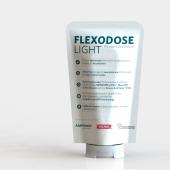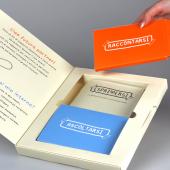POPLAST Srl | Best Packaging 2024
In & Out green coffee
What is it. It is a printed bag created to switch from the classic PET/ALU/PE structure in a mono polymer structure. It is made by lamination process of three different layers of the same plastic material (PP) able of guarantee the same performance (barrier) of the original structure, the same machinability (also reducing the temperatures of the sealing bars) of the original structure and accommodating the insertion of valves in both PP and PE. This structure allows a reduction in weight from 15 to 30% (depending on the starting structure) and a reduction in electricity consumption linked to the packaging machine (lower temperature of the sealing bars)
Manufacturing material. Polypropylene
Accessibility focus. Available in different formats (reels or pre-formed bags) and in different thicknesses from a minimum of 45 my to a maximum of 200 my. The lightness of the mono PP structure compared to the traditional one, allows for an improvement in the packaging weight/product weight ratio. The very high barrier allows the shelf-life of the product to be kept practically unchanged. The internal layer used as a sealing layer gives the bag complete hermeticity and at the same time allows for easy opening (single doses) or, if desired, an easy-peel function.
Technology. Flexible packaging produced by flexographic printing and lamination. Obviously, it is possible to create the same structure (with different thicknesses depending on the use) both in digital and rotogravure printing.
Product and potential markets. Currently the structure is offered and purchased by companies that produce coffee, powdered food preparations, nutrition bars, pre-cooked foods (kept at room temperature) and pre-cooked foods in the cold chain (+4°C fridge). With the same structure it is possible to package food products that suffer from oxidation or humidity, or which require a particularly long shelf life.
Design & Sustainability. An innovative recyclable material CYCLOS.DE certified (93% recyclability), designed to be processed without making substantial changes to packaging machines that use traditional materials (ready to use). Allows settings of the sealing bars with significantly lower temperatures (-25/-35°C). Allows the application of freshness-saving valves (if used). Lower energy consumption in packaging is another important advantage. Fully compliant with the requirements of recent European regulations.






















